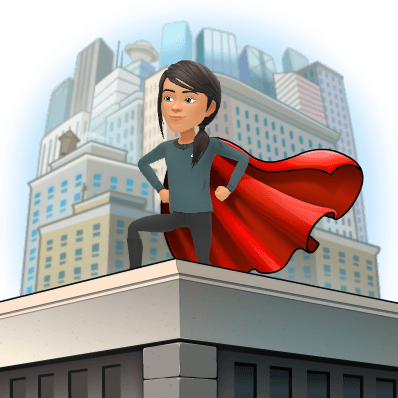Over the last year and a half, I hit the snooze button on my writing. Navigating The pandemic and pursuing another master's degree have fried my creative juices. From assisting my district in adopting a new LMS to navigating parenting three young children (the youngest immunocompromised), life's been more difficult than I'd like. We have all faced unique challenges, but I'm beginning to see the light. I'm ready to use my voice and write.
The greatest lesson I have learned these past few years is the importance of timing. As an instructional coach, I need to anticipate the needs of my colleagues. Educational beats ebb and flow. The cadence of a semester brings unique challenges and patterns that have teachers seeking specific instructional or tech-based resources. At certain points in the semester, teachers need engagement strategies and assessment ideas, or they might just be looking for ideas on implementing a new tech tool.
Over the last few months, I've spent much time reflecting on the best time and day to send an all-staff email or making myself visible so that I am accessible to my colleagues, especially during the higher-stress seasons of the semester. Like the Genie from Aladdin, I want to be ready to appear at a moment's notice, ready to ask, "(Poof) What do you need?" The more accessible I am, the more trust I garner from my peers. Maintaining that trust and fostering strong relationships across the building has helped me continue supporting and navigating the changing landscape of learning during a pandemic.
So, it's all in the timing? How can instructional leaders master the art of timing?
Utilize backward planning.
Always start with the end goals. Once those benchmarks are established, working backward through the process helps to create more accurate outcomes, inspire impactful lesson plans, and can provide greater insight into what students (or, in the case of an instructional leader -- teachers) need. As I set my own classroom goals this year, I continued asking myself, "What skills do I hope my students will take with them after my class? How do I encourage them to reach that point?" These questions forced me to think about the summatives and end products, which has allowed me to create opportunities to practice skills more frequently and directly. For example -- in my semester-long speech class, I wanted students to speak more. Students complete mini-group challenges to practice the interpersonal skills they need for their unit summatives more often and can identify the why behind their actions and speech development.
(For more on backward planning, check out this amazing blog post by Jennifer Gonzalez).
Set small daily goals.
I create a to-do list every morning (or even the night before). These to-do lists give me energy and keep me focused on what needs to be accomplished and in what order. This short process of writing out and reflecting on tasks has helped me increase productivity and effectiveness. Forgetting an important task is easy, especially in a busy environment. Taking two minutes to plan or organize the day has been incredibly beneficial and rewarding. I love using a good pen and crossing off items on the to-do list. Remember to work ahead when possible. Crossing off one little task that could be put off until today saves exponential time the next day.
Study instructional strategies and find inspiration.
As an instructional coach, I have focused on what theme I wanted to share with colleagues. We are still recovering from the pandemic. By the end of this school year, I hope teachers can say that they understand how they can use specific skills and strategies they used during the pandemic to enhance their classrooms. As a result, I worked with the administration at my school to encourage a focus on instructional strategies (rather than tech tools) to help teachers see how they might blend in new ways to engage their students using various tools and methods. Halfway through the year, I am excited to see that there's been momentum for using stations, including student choice, and exploring different approaches to learning.
Reading current literature and learning from peers on social media platforms or at conferences (even digital ones) has been incredibly growing and powerful. We always have something to learn and can find inspiration for incredible people near and far!
Finally, focus on relationships. Whatever pressing task is consuming you, remember that it can wait.
At the heart of a successful school are strong relationships. Tasks can almost always wait. No matter what, I always have time for a friend (or a student). My colleagues are so important to me. As an instructional coach, I remind myself that whatever tech glitch or concern a teacher has at any given moment, that issue is everything to them. By stopping what I am doing for just a moment, I can add relief to their day. I am building trust, and more importantly, I am making a statement about what matters most. When teachers (or students) feel heard, validated, and supported, their whole world can change instantly. And that change, that change is culture-building and life-giving.
Time keeps on ticking, but we can make them matter even more.

.jpeg)














